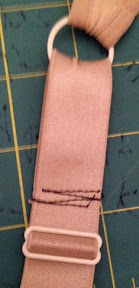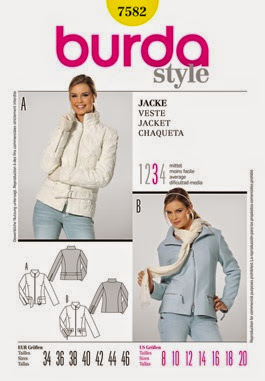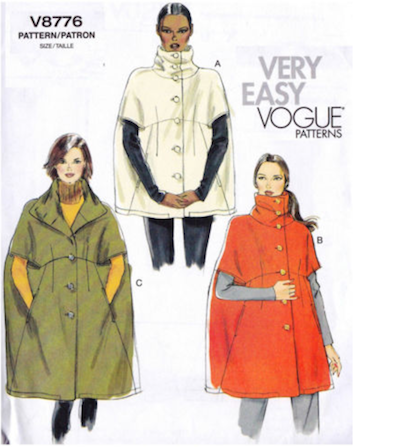I had to think for awhile before writing this post. After all, the world has enough negativity, doesn't it?
But, actually, there's negativity and there's constructive criticism, not to mention looking out for the consumer.
Have you heard of GOMI?
GOMI is an acronym for "Get Off My Internets". It's a forum that was created some time ago and was brought to my attention by two different bloggers many months ago. At first I looked at it rarely but it has become an almost daily ritual to check it out.
GOMI is a site that critiques bloggers. They critique all sorts of bloggers, like lifestyle bloggers, food bloggers, wedding bloggers, mommy/daddy bloggers and, of course, crafting bloggers.
Now, it might seem mean to go after bloggers. I mean, putting yourself out there on a blog can be very hard. Generally, the more compelling a blog, the more vulnerable the blogger has made herself. (Not always, but often.)
Except GOMI (at least on the crafting forum, I don't read the other forums), tends to go after blogs where the blogger is trying to monetize their blog. They specifically go after folks who sell products (be it books or patterns) that are not really ready for prime time. Particularly when said products are being hyped (loved without criticism) on blog tours, for example.
As a result, many of the blogs they snark about are not blogs that I follow, but it's still interesting.
Have I been called out on GOMI?
Why, yes I have!
When the Vogue thread was created (quite some time ago), the poster who originated the thread claimed that I had hated on Vogue, then they flew me out to Puyallup and, as a result, I'd sold out. Other posters defended me, saying that, no, I never actually hated on Vogue, but was giving them constructive criticism. Somewhere around page 11 of the thread, the original poster said she re-read my posts and she agreed. I was happy to see her redaction because, while I love Vogue and would be devastated to see them shut their doors (shudder), they have never so much as given me a free pattern. And they shouldn't, as they need the sales. In fact, if they tried to at this point, it would be weird.
Am I kinder to Vogue now? I'm not sure. Maybe. Not consciously, at any rate, though the fact that I met many of them in person and liked them has to factor in somewhere. It was a savvy move on their part to reach out to folks who were criticizing their products (not just me, by the way).
My other mention on GOMI was from a poster who said that I seemed nice (thank you!) but that I had "damned saggy boobs."
 Cartoon from here.
Cartoon from here.
(In fact, googling "old lady cartoon" is very enlightening.)
Ummm. OK.
Now, this might seem like a personal attack and, it sort of borders on that, but GOMI, as a rule, doesn't personally attack a blogger about weight, body issues, race, gender, orientation, and so on. (I'm not saying that it never happens, but it's not what they are about.) So I sat on this comment for awhile. I looked at some of my posted photos. I really don't think that, in general, my boobs are saggy, but I'm not saying that it was a totally invalid comment.
If you don't have a large bust, maybe you don't know how heavy those "lady boulders" can be. (I've always wondered, are fake boobs equally heavy?) Even when I move the slider all the way down on my bra strap in the morning, by evening, it's moved all the way up. And putting on a bra where the slider is all the way down is not comfortable, let me tell you. There is some happy medium.
So, I did a little adjustment to my bra straps that I will share with others who might have this problem. I adjusted the straps where I like and sewed through them.

Problem solved, and hopefully no more:
 Cartoon from here
Cartoon from here
Though I make no promises. :)
Constructive criticism is a good thing and far too rarely solicited, or welcomed, these days. If I were trying to make a business out of my hobby, I would listen to it, and evaluate whether it was fair, whether I could do something different. Try to isolate the truth from the hurt feelings that the feedback created.
For example, as a technical writer, I sometimes get feedback that the docs aren't clear. Perhaps someone claims that we didn't warn them about X or tell them about Y. Sometimes, the feedback is wrong. I did warn them about X and told them about Y. But that's not good enough. If the docs aren't clear, and people are missing important information, then they need to be reworked so that people won't be tripped up. Even if the feedback was technically incorrect.
I think that GOMI is providing a useful service for the consumer.
So, if I earned money off my blog, I would listen to the criticisms on GOMI and look for nuggets of truth, to see where I could do better.
If you decide to participate in, or read, GOMI let me provide some useful acronyms (and one definition) for you:
- GOMI
- Get Off My Internets. Used to acknowledge the blogs they dislike and generally don't read. (Though clearly they are reading them some of the time!)
- Hate reads
- Blogs they still read, generally in order to criticize. Some of them seem to have a blog roll dedicated to the blogs they dislike, in order to isolate them from the blog roll filled with their favorite blogs. Pretty clever, but more work than I would bother with.
- WK
- White Knight. A poster might "WK" (defend) a blogger.
- SBC
- Sewing Blog Community
- SOMI
- Stay On My Internets. Used to acknowledge the blogs they like. I've found some nice blogs this way.
Also, GOMI has done something unusual: They have, collectively, started their own blog! At first, I thought it was a joke, but it's not. Check out Sew Sorry Sew Fat and see their rules for blogging. In fact, yesterday they posted tongue-in-check advice on how to write a GOMI-worthy sewing blog.
By the way, I do not have a login on GOMI, so I have never commented there. I've been tempted to weigh in a few times, but I am just a spectator.



























